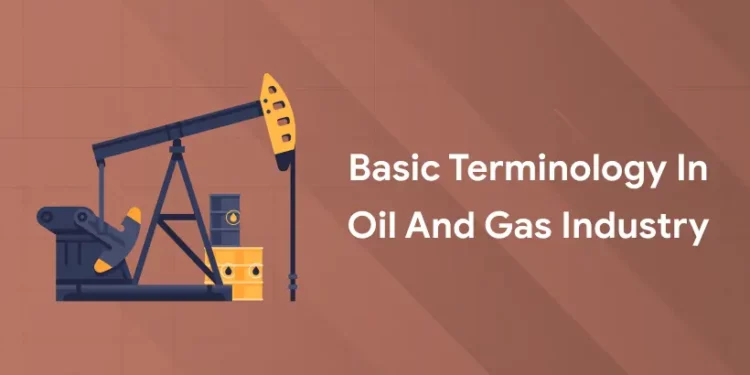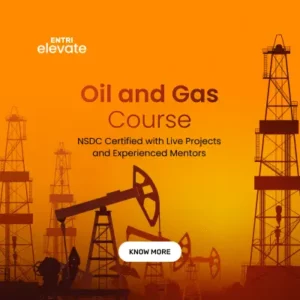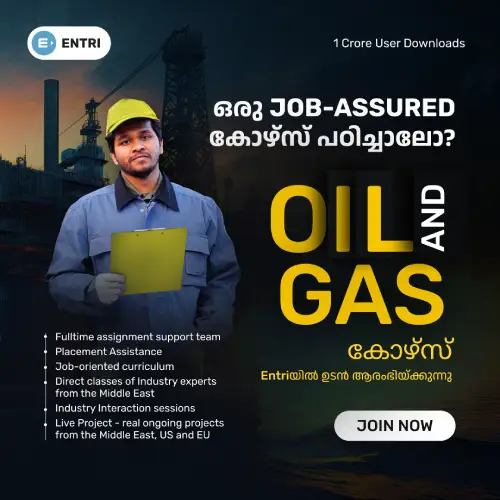Table of Contents
Oil and natural gas are major components of the energy business and have a big influence on the global economy because they are the primary fuel sources in the globe. Modern technology is needed to handle the intricate, capital-intensive, and highly sophisticated systems and processes involved in the production and distribution of petrol and oil. Natural gas and oil have historically been associated, mostly due to the upstream portion of the industry and the production process. Natural gas was considered an annoyance throughout a significant portion of the industry’s history and is still flared in considerable amounts in various countries, particularly the US.
Get Certified! Get Confident! Join our Oil and Gas Course!
Terminology in Oil and Gas Industry
Upstream refers to exploration and production of crude oil and natural gas, midstream is the transportation and storage of crude oil and natural gas, downstream refers to the conversion of crude oil and natural gas into thousands of finished products.
Upstream Terminology
The phrase upstream refers to everything related to the exploration and production of oil and natural gas. Exploration is the general term used to describe geologic surveys and any information collection intended to identify particular places where minerals are likely to be located. The term “upstream” also refers to the procedures involved in actually drilling and producing oil and natural gas resources to the surface.
Midstream Terminology
The midstream section of the oil and natural gas business includes everything required to transport and store crude oil and natural gas before they are refined and processed into fuels and critical components used to manufacture a lengthy list of products on which we all rely every day. In addition, midstream include pipelines and all the equipment—such as intercontinental tankers, rail tank cars, pumping stations, and tank trucks—necessary to transport these commodities across large distances.
Downstream Terminology
Downstream refers to the last segment of the oil and natural gas industry. This covers the entire process of converting natural gas and crude oil into the thousands of final goods that we use on a daily basis. Fuels including petrol, diesel, kerosene, jet fuels, heating oils and asphalt for road construction are a few of the more noticeable goods. However, considerably less evident items like synthetic rubbers, fertilisers, preservatives, containers, and plastics for parts in numerous products are made with long-chain hydrocarbons, which are found in both oil and natural gas. Even artificial limbs, hearing aids and flame-retardant clothes for firefighters are made from components derived from oil and natural gas. Paints, dyes, textiles, and pretty much everything made are actually related to oil and natural gas.
Key Financial Terms in Oil and Gas Industry
1: What is the primary purpose of a refinery in the oil and gas industry?
Cash Flow From Operations: Net income after taxes plus depreciation and other noncash expenses equals the cash flow generated by a business from its operations.
Current Expenditure: An expense shown as an expense on the income statement that is anticipated to be beneficial only in the current year.
Development Expenditures: The price of the infrastructure, support systems, and exploratory wells needed to locate and ready oil and gas reserves for production.
Exploration Expenditures: The expenditures of finding oil and gas reserves, including the price of keeping and carrying undeveloped land, geological and geophysical costs, and drilling and equipping exploratory wells.
Net Income: The entire earnings, or profit, of a business. Revenues less operating costs, interest, taxes, depreciation, and other expenses are used to compute net income. This figure is a crucial indicator of the business’s long-term profitability. 111
Net Investment In Place: The value of property, plant, and equipment less depreciation, plus investments and advances to unconsolidated affiliates.
Net Refining Margin: The difference between the gross refining margin and the costs of manufacturing and selling petroleum products. The cash earnings from the manufacture and sale of refined goods before taxes are measured by the net margin. Convenience store sales of non-petroleum products are not included in the net margin.
Entri’s Certification Course for Oil and Gas
Given the constantly growing job chances in the oil and gas industry, Entri App provides the best platform for studying the nuances of the industry with the help of specialised teaching-learning methodologies. It will provide you with hands-on experience in managing real-world scenarios under the experienced guidance of qualified faculty members.
Since experienced teams established the Entri oil and gas training syllabus, you can enhance your skills and basic knowledge. Entri’s inclusive and systematic learning platform can help you land a highly sought-after career in the oil and gas industry. You will have the chance to focus more on the live projects as soon as you join in the course, which will prepare you for the oil and gas course.
The teaching given by professionals in the business is a major draw for the course. Entri’s oil & gas school offers employment opportunities both domestically and internationally. Enrol with Entri and choose a reliable, solid career path.
Environmental and Safety Terminology
Earthing: is the bonding of metallic enclosures of electrical equipment, cable armouring, conduits and trunking, and so on, to ensure that these conductors are electrically continuous and securely connected to the earth’s general mass at one or more locations.
Economic: Benefiting commerce or being quick; (of a business venture) covering (at least) the costs of use or operation; solvent or successful.
Emission: The action of giving off or sending out light, heat, gases, odours, sounds, etc.
Extinguishing Media: The substance contained in a fire extinguisher which causes the extinction of a fire, such as Carbon Dioxide, Foam etc.
Fail to danger: When a plant or system is left in a risky state due to the failure of protection mechanisms.
Fail to danger: When a plant or system is left in a risky state due to the failure of protection mechanisms.
Fail to safety: A device meant to ensure that if protective measures fail, the plan or system is not left in a harmful condition.
A fall arrest harness is a full body harness with a lanyard fastened to a lifeline or other appropriate anchorage. Its purpose is to prevent an individual from falling to the ground in the event that they fall from a height, such as a roof.
Conclusion:
A vital component of the world economy, the oil and natural gas sector is intricate and multidimensional. Gaining an understanding of its upstream, midstream, and downstream parts is crucial to comprehending the processes involved in the exploration, extraction, transportation, and transformation of energy resources into the diverse range of products that power modern life.
Get Certified! Get Confident! Join our Oil and Gas Course!
Frequently Asked Questions
In the oil and gas sector, what is meant by "upstream"?
The term “upstream” describes the sector of the economy that is engaged in the discovery and extraction of natural gas and crude oil. This covers tasks like resource extraction from the soil, drilling, and geological surveys.
What does "net refining margin" measure?
The difference between the gross refining margin and the expenses related to producing and marketing petroleum products is known as the net refining margin. It shows the cash proceeds from refining (before taxes) minus sales of non-petroleum products.
What is oil energy called?
Crude oil, often known as petroleum, is a nonrenewable fossil fuel.











